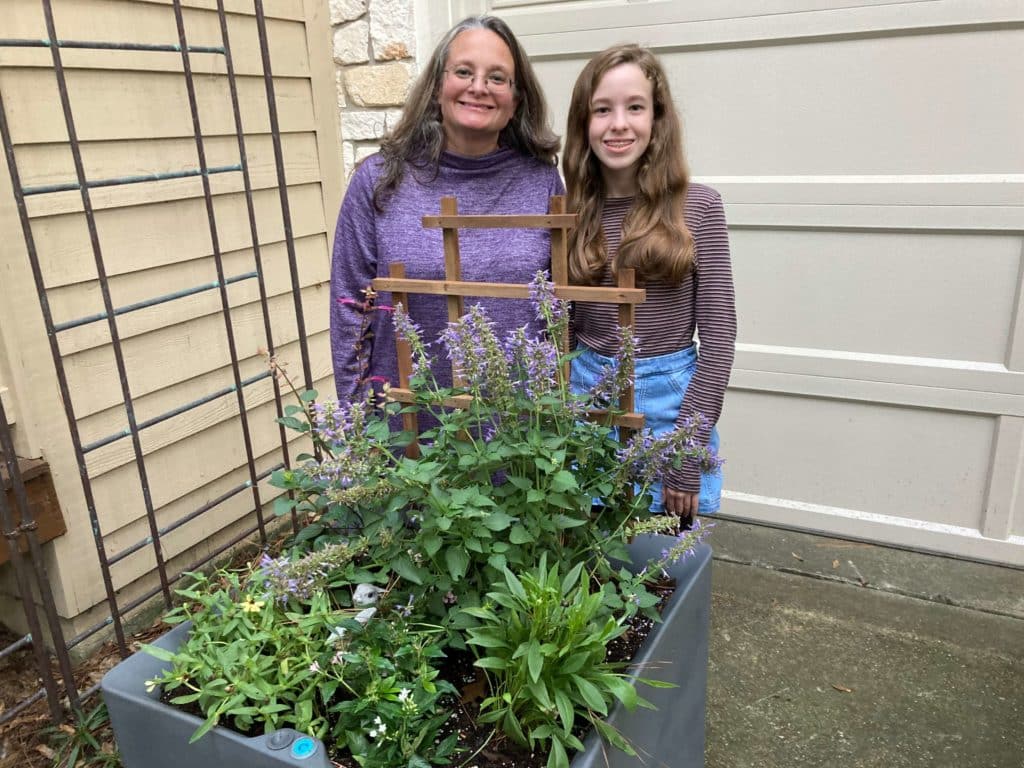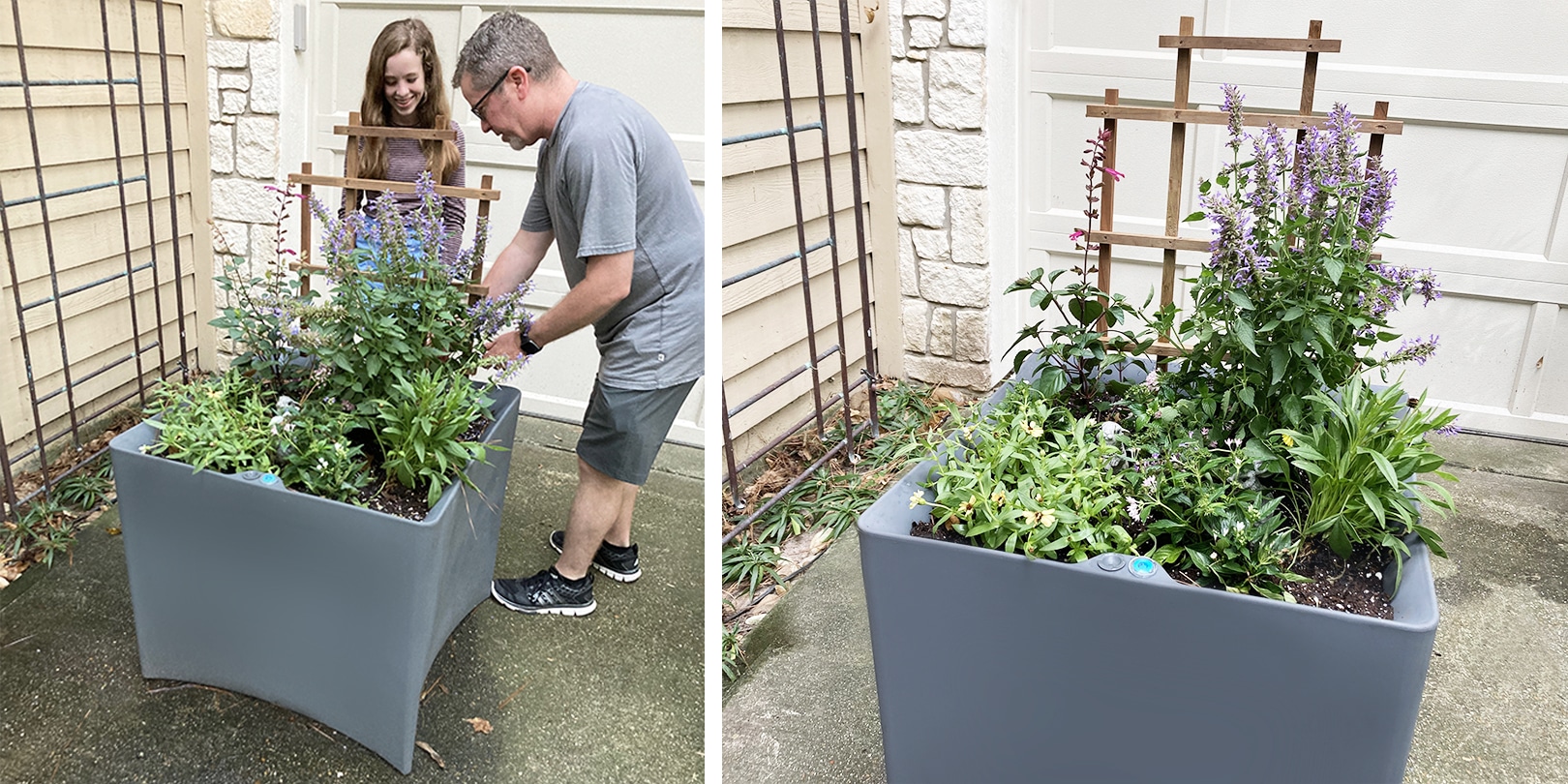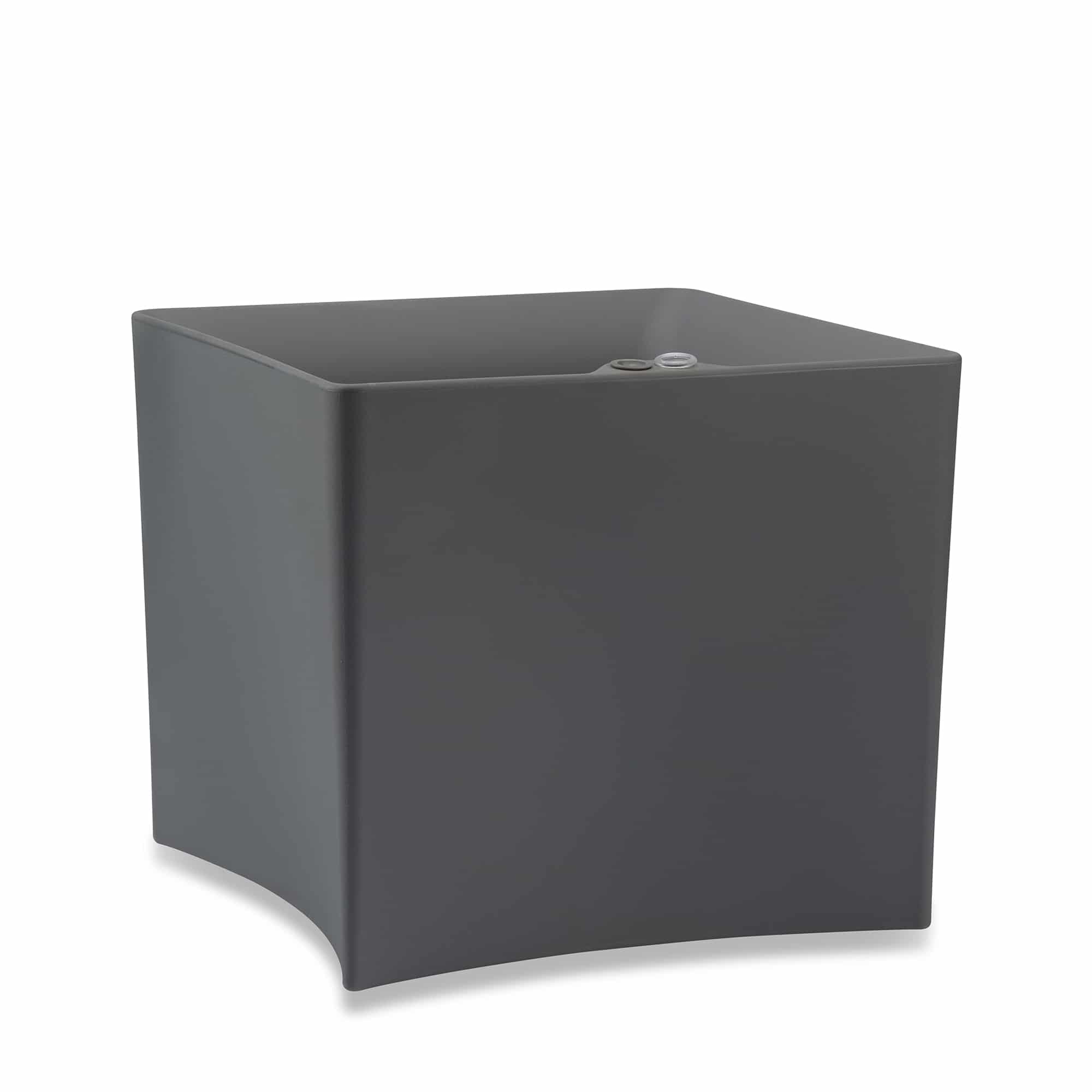Container gardening is an easy way for families to dig into gardening fun! They require minimal care and maintenance. They are flexible in cost, size, and scope. Plus they provide opportunities for gardeners of all ages to express their creativity and engage in some experimentation. Here are five steps to help you begin your family’s container garden adventure:
1. Select the right spot.
As you choose a location for your container garden, select a place where you can see it every day. Examples include placing it on a backyard patio where you’ll see it from a window, on your apartment’s balcony, on a front porch stoop, or even in your driveway. Being able to see it daily will help you remember to care for it and — more importantly — allow you to enjoying watching it grow! As you choose the spot, keep in mind that all plants need some amount of light to survive. Some need full sun (at least 6 hours of direct sun per day) and some thrive on less. Few plants will grow in deep shade. Try to choose a spot in full to part sun, keeping in mind that planters in full sun may need extra attention to ensure adequate watering.
2. Choose an appropriate container to meet your needs and budget.
A container garden can be as simple, small, and inexpensive as a bucket with holes drilled in the bottom — anything that can hold potting soil and provide drainage for excess water will do. That said, specially designed planters can make the gardener’s job a little easier. For example, self-watering planters like the Crescent Garden TruDrop garden system ensures a consistent supply of water and reduces watering chores. Other qualities to consider include aesthetics and durability. Select a container that is the right size for the space you have selected. Keep in mind that small, porous containers, such as small unglazed clay pots, will require more frequent watering than larger, non-porous pots. Tip: Place large containers on wheels or a plant dolly so you can move it if needed. Important: If you plan to grow edible crops, make sure your container is food-safe and was never used to store toxic or hazardous materials.
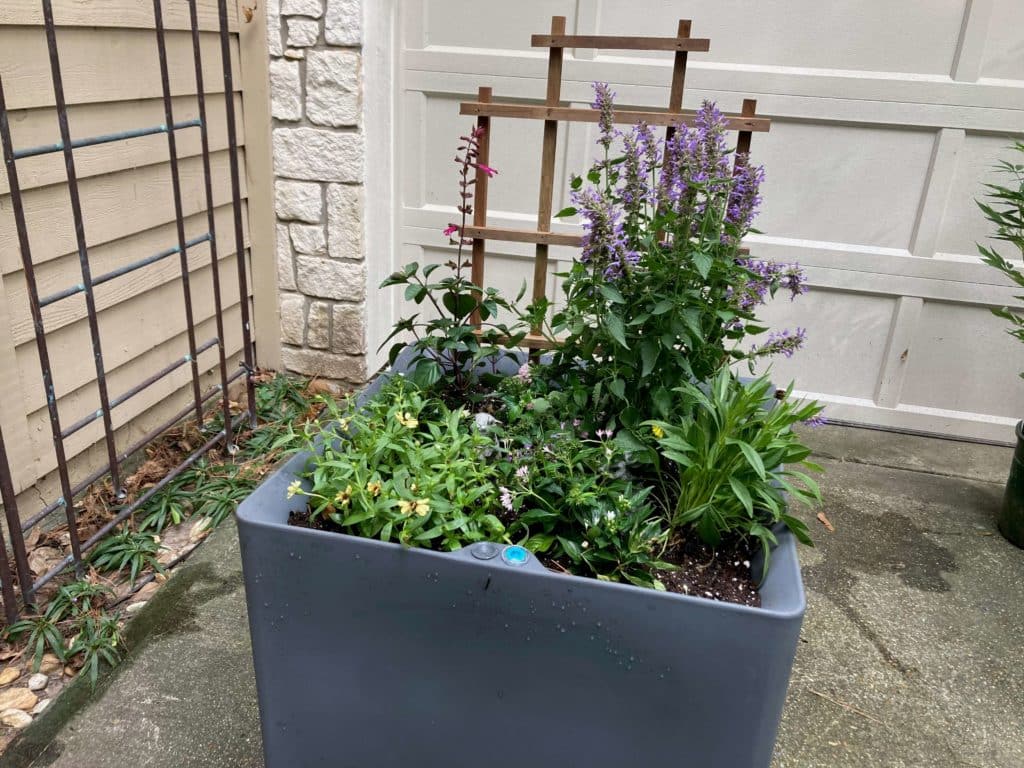
Crescent Garden’s self-watering TruDrop Pinch Planter
3. Obtain high-quality potting soil.
Plants rely on soil for air, water, and nutrients. Growing them in pots limits the space for roots to grow to reach these resources. That means it’s up to you to ensure the plants’ needs are met. The first step is making sure the potting soil you choose holds moisture — but not too much. It also must allow excess water to drain. Tip: Avoid using garden soil, which is often poorly drained and may contain harmful organisms. Some potting soils come with nutrients already mixed in; however, you’ll still need to provide supplemental nutrients when those first ones are used up by the plants. Choosing high-quality potting soil will contribute greatly to the success of your container garden.
4. Gather the right plants.
Although you might be tempted to pick out your plants before choosing your location or container, resist the urge to begin with this step. Plants are adapted to a wide variety of environments from full sun to deep shade and from hot and humid climates to dry deserts. They also represent a wide range of growing habits from miniature plants to towering giants and from climbing vines to sturdy trees. Carefully study the sun availability and size of your space and think about your climate. Read plant labels and descriptions carefully, noting the mature size of the plant. Will it still fit in your container? Use this information to brainstorm a list of plants that will thrive in the conditions you have to offer.
If you are gardening with children, it is very important to let them help pick out your plants. This helps them feel like it is their garden and will add to their interest and investment. Some fun plants for kids including sensory plants like herbs and lamb’s ear, edible plants that are easy to harvest like cherry tomatoes and radishes, and blooming plants that attract pollinators like pansies and zinnias.
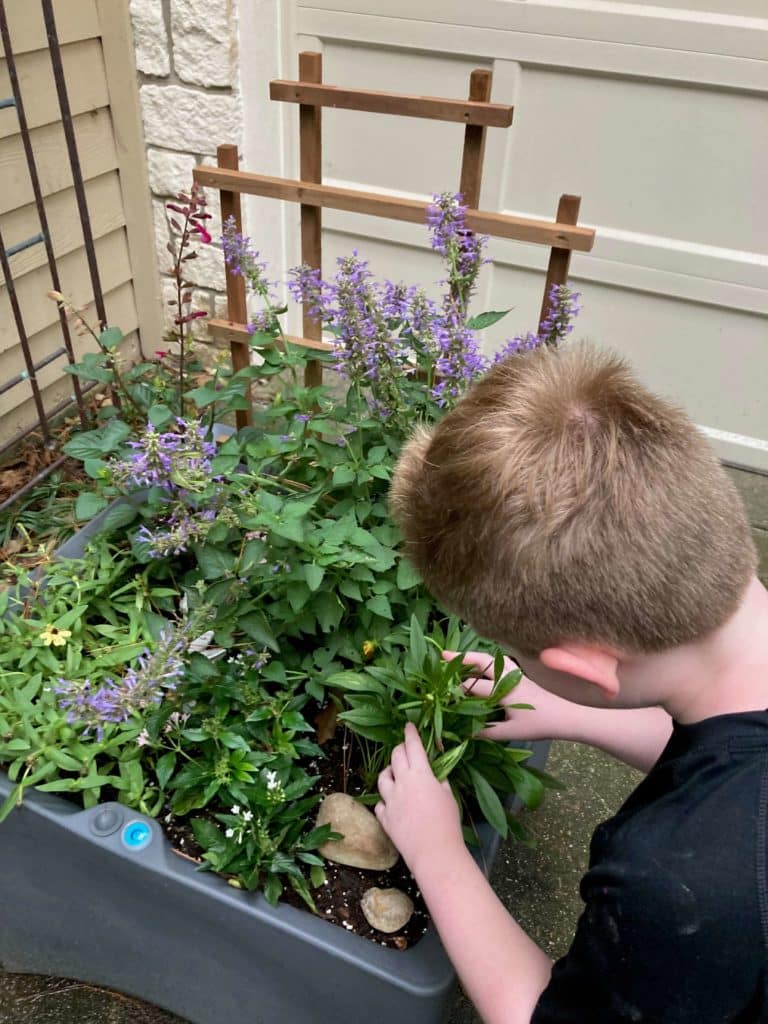
Kids feel a sense of ownership when they select their own plants
Sidebar
Tip: Gardening with kids? Start your garden with a mix of small plants and seeds for a good balance of instant and delayed gratification. If you are working with young children, remember bigger seeds like beans and sunflowers are easier for small hands to handle.
Here are some kid-favorite plants that are great for container gardening:
Sensory Plants:
- Basil. In addition to smelling great, basil can easily be added to all kinds of recipes from pesto to pizza.
- Dill. Dill thrives in cooler weather, offering a distinctive scent that many kids recognize. It is also serves as a host plant for swallowtail butterfly caterpillars.
- Lamb’s Ear. A kid favorite, lamb’s ear is a perennial with leaves that are soft and delightful to touch.
Radishes.
Radish seeds grow quickly, and the roots can be ready to harvest for a spicy treat in as little as 30 days.
Cherry tomatoes.
Few can resist popping cherry tomatoes into their mouth for a quick sweet treat. Most tomato plants need a bit of extra support, so include a sturdy tomato cage or stake to your container when planting. Tip: Look for varieties labeled as compact or good for container-growing.
Pansies. Available in a wide-range of colors, these happy-looking plants are great for cool-season containers. The flowers can be picked and pressed in books to make crafts.
Zinnias. From dwarf plants to those up to 3 feet tall, zinnias are available in hundreds of varieties in a rainbow of colors. Their blooms attract many pollinators and make great cut flowers.
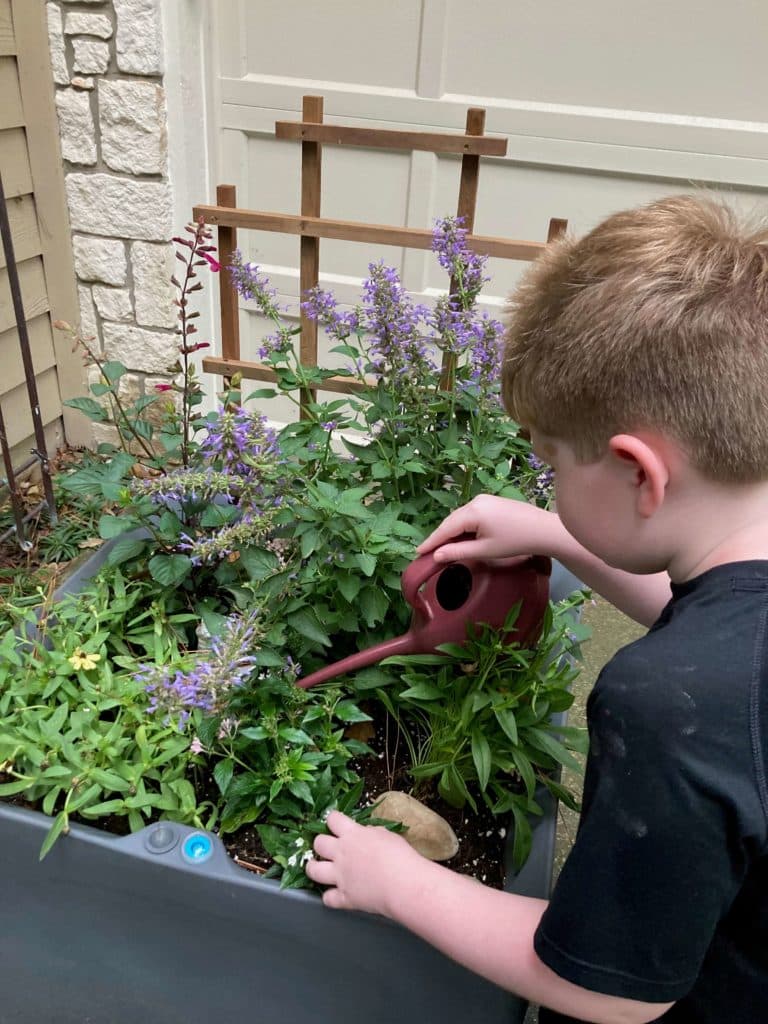
Garden accessories add a bit of fun and personality to any family garden adventure.
5. Add some extras!
Watching your plants grow and change is exciting, and observing the insects and other creatures that come to visit can add interest too. Additionally, there are many fun accessories for additional engagement of your young gardeners. Creative additions (either purchased or kid-made) include a rain gauge to track rainfall, a pinwheel to observe wind speeds, a gnome or tiny action figures for imaginative play, a wind chime for gentle music, or maybe a rock or two for butterflies or other creatures to visit. For some kids, leaving a spot in your container that does not have plants, or even a container that does not hold plants at all, can be a fun place to dig and explore with a spoon or small trowel. Kids can also decorate the outside of the container to give it a personal touch. To make your garden accessories even more special, handcraft them from repurposed and recycled materials. Your container garden can become a spot to show off your creations and treasures.
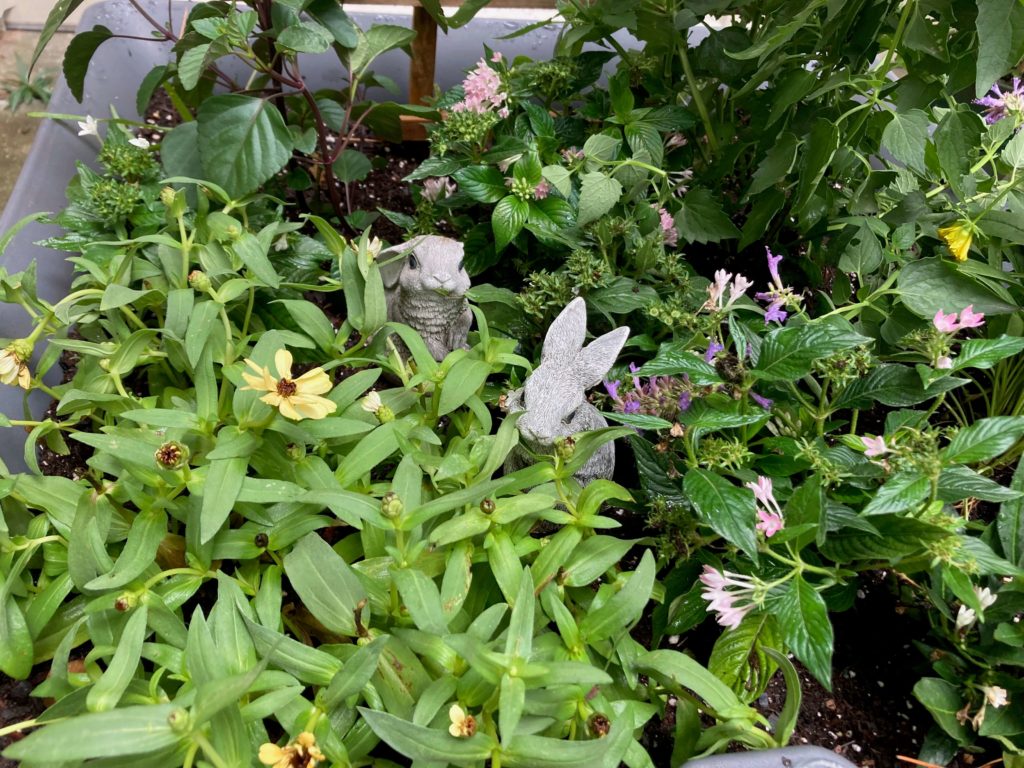
Get creative and make gardening fun with gardening accessories!
One last tip. As with any family garden venture, it is always wise to start small and dream big. Begin with 1 or 2 small containers and get a little experience under your belt. Once you gain a little confidence, you can expand. Before you know it, your kids will be finding creative planting vessels everywhere they go — and you’ll be surrounded with all the beauty, fragrance, taste, and delight that plants have to offer.
